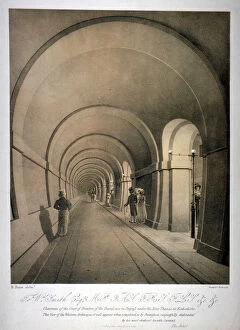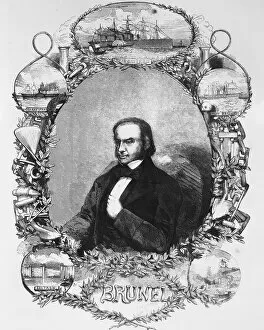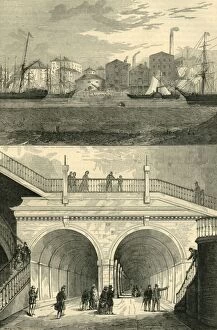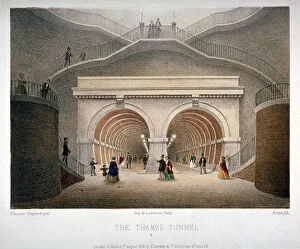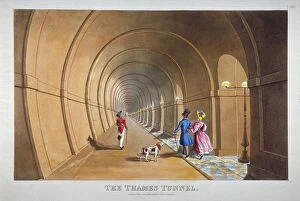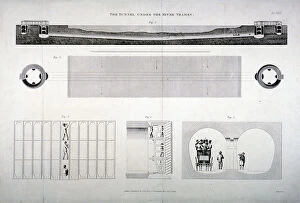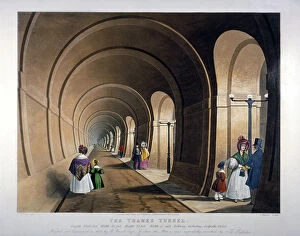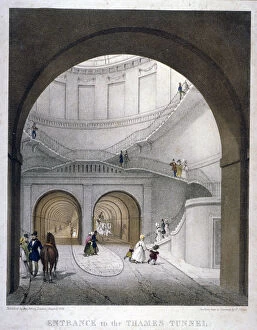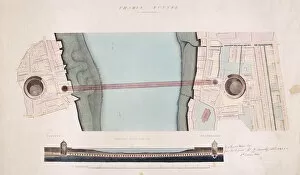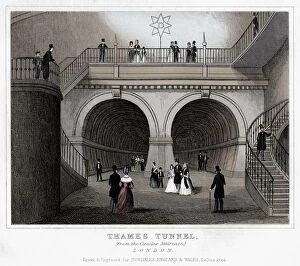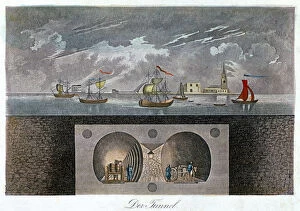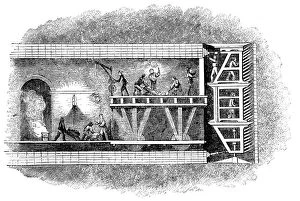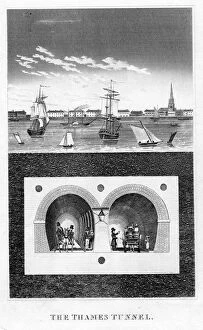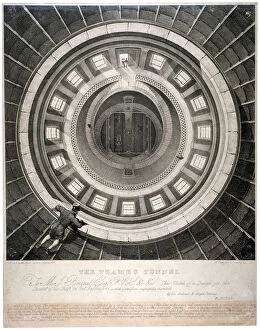Marc Isambard Collection
Marc Isambard Brunel was a remarkable figure in the field of civil engineering, leaving an indelible mark on London's landscape
For sale as Licensed Images
Choose your image, Select your licence and Download the media
Marc Isambard Brunel was a remarkable figure in the field of civil engineering, leaving an indelible mark on London's landscape. One of his most notable achievements was the construction of the Thames Tunnel, which forever changed the city's transportation infrastructure. In 1827, Brunel embarked on this ambitious project, aiming to create a tunnel beneath the River Thames. This view from that time showcases the proposed western archway of this groundbreaking endeavor. The sheer scale and complexity of such an undertaking were unprecedented at that time. Brunel's son, Isambard Kingdom Brunel, himself a renowned engineer, captured his father's likeness in this portrait from the 1850s, and is evident that Marc Isambard possessed not only incredible technical skills but also an unwavering determination to push boundaries and challenge conventional wisdom. The pathfinders who followed in Marc Isambard Brunel's footsteps recognized his pioneering spirit and paid homage to his contributions. This artwork from 1922 depicts him as one of these trailblazers who paved the way for future generations in engineering. One essential tool used during the construction process was a diving-bell like this one from around 1878. These devices allowed workers to descend into great depths underwater while maintaining breathable air—an innovation crucial for completing such an audacious feat as building beneath a riverbed. When finally opened for traffic in 1872 after years of tireless effort by countless individuals involved in its creation, the Thames Tunnel became a marvel admired by all who witnessed it firsthand. This image captures its original appearance—a testament to human ingenuity and perseverance. This earlier depiction from 1827 offers another glimpse into what Londoners experienced when they first set foot inside this subterranean wonder—the awe-inspiring interior view showcasing architectural brilliance melded with functional design elements. A shield like this one utilized during construction provided protection against cave-ins or collapses within unstable soil conditions—a testament to the meticulous planning and engineering prowess employed by Brunel and his team.

